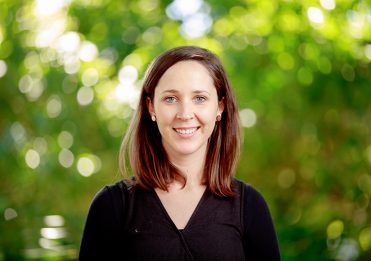Dean of Studies, Mr James Keogh
Originally published in 2017
Upon hearing the phrase ‘a rite of passage’, it is not uncommon for particular imagery to come to mind. For those who grew up with National Geographic specials, you may recall what appeared to be unusual practices of ancient and/or primitive cultures.
Such practices include: vine or land diving (similar to bungee jumping but not elasticised) in Vanuatu; teeth sharpening by natives in the Mentawai islands; or even scarification of the body as a ritual undertaken by many past cultures.
Modern western cultures have their own rites of passage and one does not have to look too far when based in a school. In fact, it can be argued that the Year 12 experience of the Queensland Core Skills (QCS) Test acts as a rite of passage in itself.
The concept of ‘rites of passage’ and its defining characteristics were first described by Arnold van Gennep in his book, Les Rites de Passage (1909). The characteristics of a rite of passage include separation, transition and reincorporation. Separation, or the preliminal phase, involves a withdrawal or removal, physically or symbolically, of a person from their previous status (Lightstone, Bird et. al., 1995). The transition, or liminal phase, is described by Turner (1987) as a state of ‘betwixt and between’—a state that involves some memorable form of ceremony, ritual or event that is repeated in a society over time and is recognised as significant by the social group (Arosio, 2016). It is these rituals that are at the heart of those sometimes painful initiation rites acknowledged earlier. Finally, the reincorporation phase involves coming back into the group with a new status resulting from the social recognition following the successful completion of an initiation ritual.
The exploration of these phases and their ritualistic nature as part of development milestones and socialisation processes in pre-modern cultures, or ‘semi-civilised peoples’ (van Gennep, 1906) is well documented, even if the underpinning assumption of evolutionary cultural progress is now seen as somewhat flawed (Bigger, 2010). However, the highly ritualistic nature of these stages is less obvious in a post-modern world (Bernadini, 2014). Be that as it may, education has, and still does, demonstrate the features of a classic child-adulthood transition and thus acts as a rite of passage (Bernardini, 2014).
The aspect of education that draws most recognition as representing a rite of passage is that of graduation being a formal ceremony in recognition of transition from youth to adult (Fasick, 1988). However, when considering the experiences of our Year 12 students during the past week, the Queensland Core Skills (QCS) Test demonstrated the qualities of a rite of passage and may in fact be interpreted as a modern form of initiation rite.
Not only does going into Year 12 involve a form of separation from the rest of the School’s student body by having the title ‘senior’ and its associated accoutrements (badge and jersey) bestowed on students, the preparation phase leading to the QCS Test involves further separation. This phase involves lessons, programs and activities that are unknown—to the point of being shrouded in mystery—to the younger student population and are only ‘known’ by those who have already been initiated or passed through the experience.
This leads to the testing time itself. The concept of separation is quite literal in that the physical space allocated for the ‘performance of the QCS Test ritual’ is removed from the rest of the School and shielded from interruption, providing a form of isolation of the initiates.
The tests have parallels to the liminal or transitional phase of a rite of passage; it is ‘a time of moving but not yet emerged’ as described by Turner’s (1987) ‘betwixt and between’. The testing regime has the hallmarks of ceremony as described by Arosio (2016) with a series of actions following a precise order (the actions are the same in every school) and are repeated over time (yearly in this event) and are recognised as significant by society. Moreover, it has the element of transformation of the individual; there is challenge of facing one’s limitations and being able to move beyond them (Lertzam, 2002).
The transition from physical to cerebral challenge is important in understanding the QCS Test as providing status and recognition—the final phase of the rite of passage. As noted by Bigger (2010), ‘a dead ritual is carried out as a habit, and not for any vital reason’. A dead ritual has lost its meaning and use to society. Within our current cultural paradigm, cognitive skills and the ability to face and overcome cognitive challenge is as essential today as was being able to suffer through physical challenge in a time and place now far removed.
With our students having faced and moved though the QCS Test, we join with them to celebrate their personal achievement and recognise and embrace them into the world of adult learners. This rite of passage, as with all rites of passage, change both the initiate and those that live in contact with them (Arosio, 2016).
References
Arosio, L. (2016). Old and new rites of passage in contemporary Western societies: a focus on marriage and divorce ceremonies. Journal of Comparative Research in Anthropology and Sociology, 7(1).
Bernardini, J. (2014). The indicators of adulthood in the postmodern context. Postmodern Openings, 5(3), 79-93.
Bigger, S. (2010). Thresholds, liminality and fruitful chaos: revolutionary change in education? Retrieved: http://eprints.worc.ac.uk/834/1/Turner_article_Submitted.pdf
Fasick, F. (1988). Patterns of formal education in high school as rites de passage. Adolescence, 23(90).
Lertzman, D. (2002). Rediscovering rites of passage: education, transformation and the transition to sustainability. Ecology and Society, 5(2).
Lightstone, J., Bird, F., Fishbane, S., Levin, V., Lalonde, M, Mayer, L. & McBrearty, M. (1995). Ritual and ethnic identity; a comparative study of the social and meaning of liturgical ritual in synagogues. Ontario: Wilfrid Laurier University Press.
Turner, V. (1987). Betwixt and between: the liminal period in rites of passage. Betwixt and between: patterns of masculine and feminine initiation. Mahdi, L., Christopher, N., Meade. M. and Meade, M. (eds.). Illinois: Open Court Publishing Co.
Van Gennep, A. (1909) 2004. Les rites de passage. London: Routledge.
Read reflective commentary from Dean of Studies, Mr James Keogh, on his article ‘QCS Test: a modern rite of passage’.
This week, as Year 12 students have emerged from the world of QCS testing it was with interest that I reflected on my earlier article ‘QCS Test: a modern rite of passage’.
Upon reading, I was left in a quandary. The article still resonates, as the QCS testing regime has for 27 years now held the hallmarks of both a rite of passage and an initiation ritual for Queensland Year 12 students. For several years, I have worked closely with Year 12 cohorts in the lead-up to the actual rite itself—two days of intense cognitive demand. To see students emerge on the other side—tired, yet exuberant and weary, yet elated—having achieved and overcome the challenge really is a significant event. However, this year was the final QCS Test. This particular rite is no more. Thus the quandary—what replaces it?
Future seniors will have different experiences to those in the past. Will there be something that has the same impact as the QCS Test rite and initiation? Upon further thought I recognised the significance of rites in any society as a cyclical process. Thus with the ending of one rite, another will take its place. In fact, the seniors of 2020 will be the first to be invested in a new rite. They will be the first to pass into and emerge from that rite, which will undoubtedly be cemented as a new tradition in our community for years to come.




